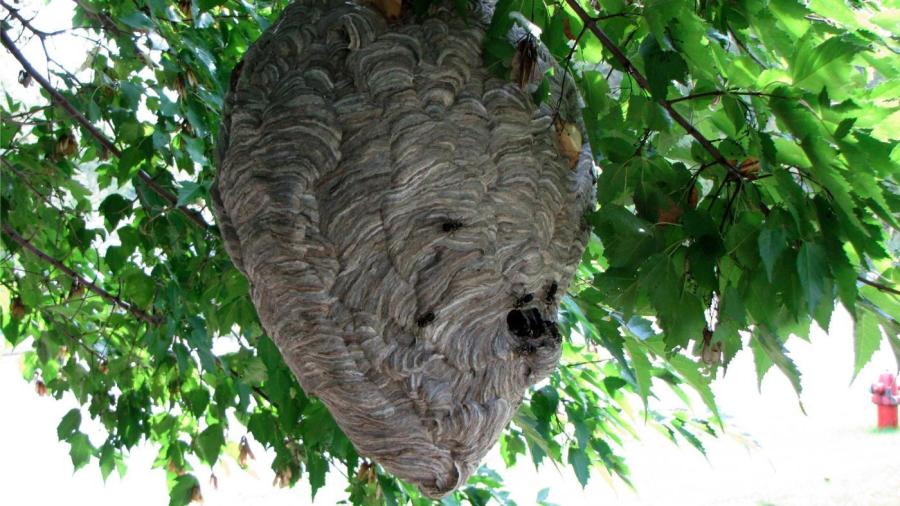How Do Wasps Make Their Nests?

Wasps build paper nests by using raw wood to create a soft paste for the nest. A wasp queen utilizes her mandibles to scrape wood fiber from logs, fences, garden sheds and other sources of wood. She uses water and her saliva to break down the fibers in her mouth and build a nest with soft paper pulp.
Once her mouth is full of paper pulp, the wasp queen finds a suitable nest site, such as a tree branch or a window shutter. She starts to add her pulp to the selected support area and waits until the wet cellulose fibers dry. These fibers become a sturdy paper nest when they are completely dry.
A wasp nest comprises hexagonal cells where young wasps develop. The queen builds a cover to protect the brood cells. The nest grows bigger as the colony increases in number, with new wasps creating new cells as necessary.
During winter, old wasp nests disintegrate naturally. Thus, wasps need to create new nests every spring. Only mated queens hibernate during the winter season, and they select their nesting sites and start building nests in spring.
There are various factors that contribute to the growth of wasp nests. The major factor that affects the construction of a wasp nest is food availability. There is typically a lower number of individual wasps when there is food shortage in early summer. Additionally, availability of nest material is important. Wasps need untreated dead wood to create a soft paste that they use for building nests.





